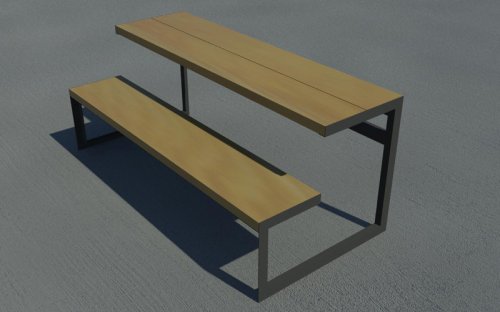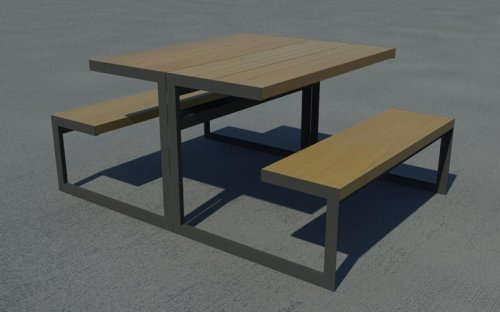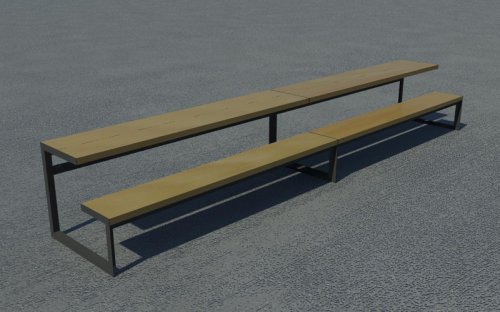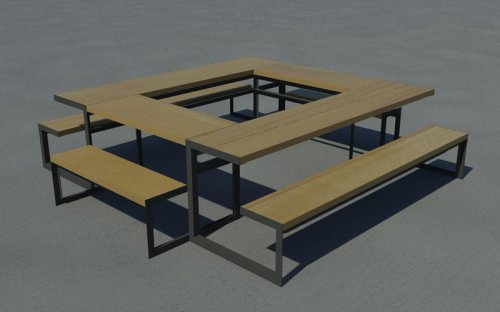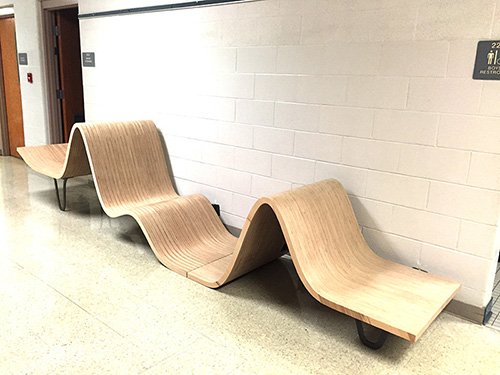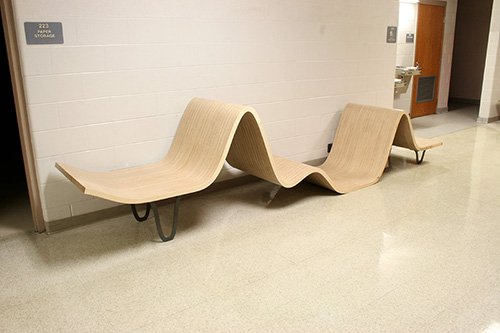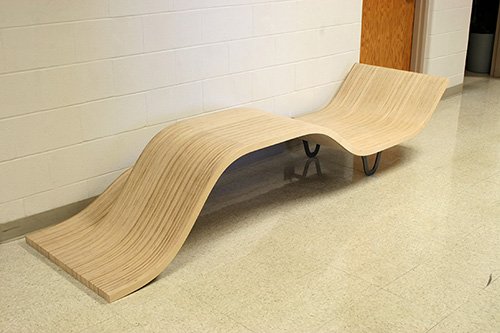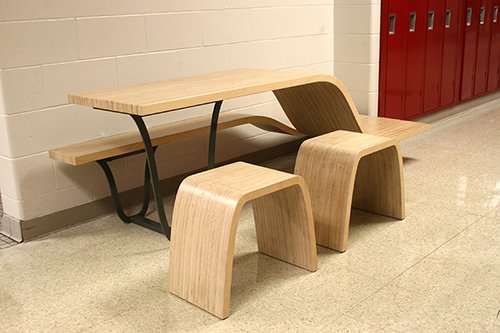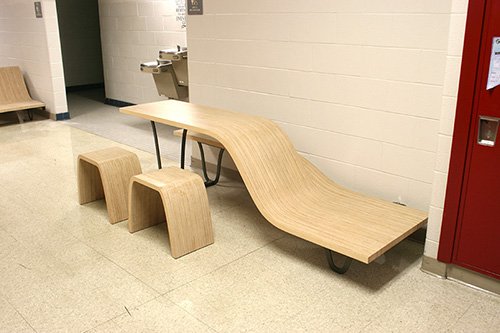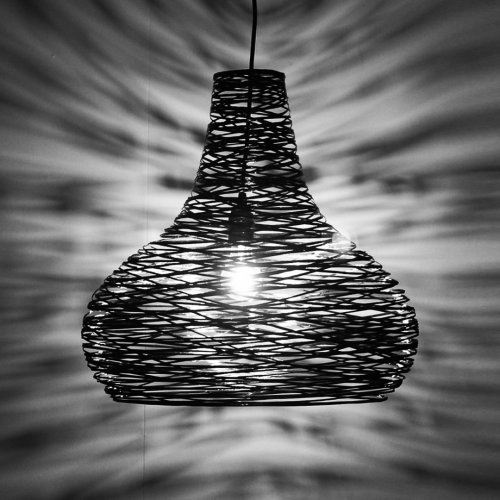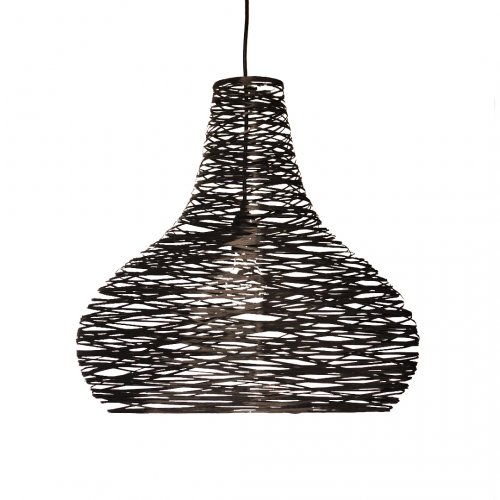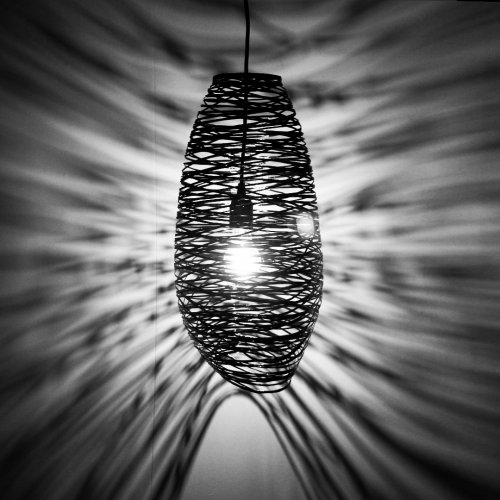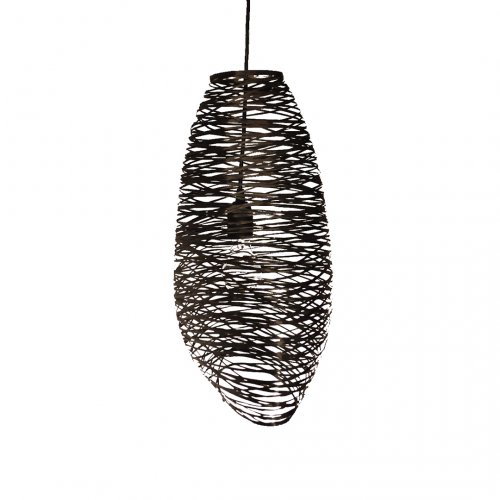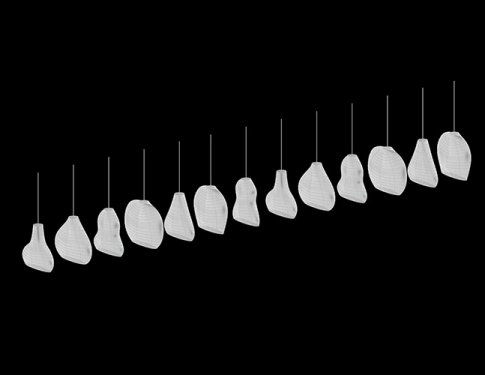Posts Tagged ‘design + build’
[.. author markup ..] [.. date markup ..]FLYING CARPET | Installed
Wednesday, September 18th, 2013Pictures of the flying carpet project installed and in use — from the first week of school. See post below this one for a full description of the project and the process of its fabrication.
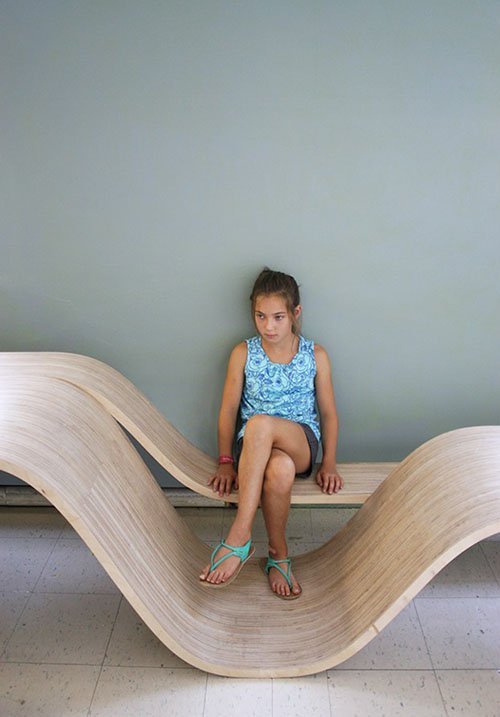
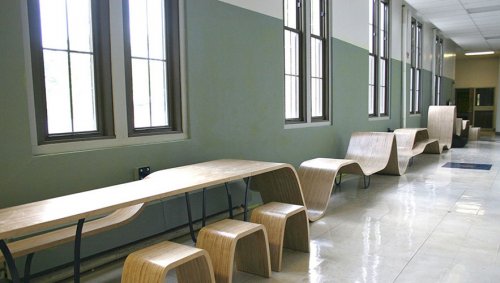
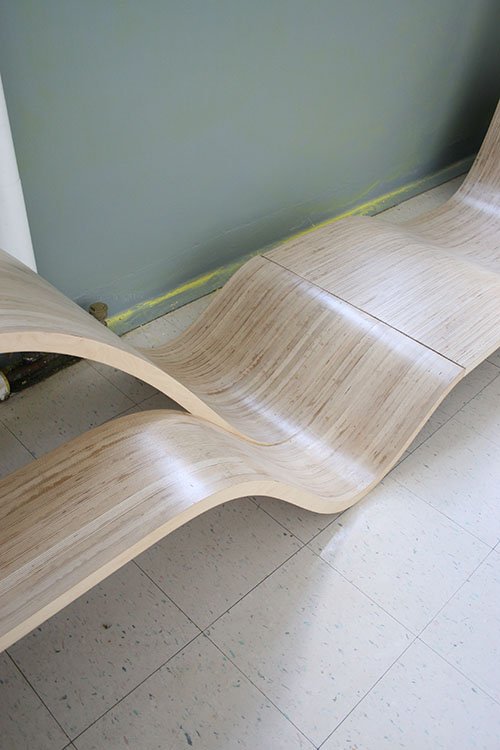
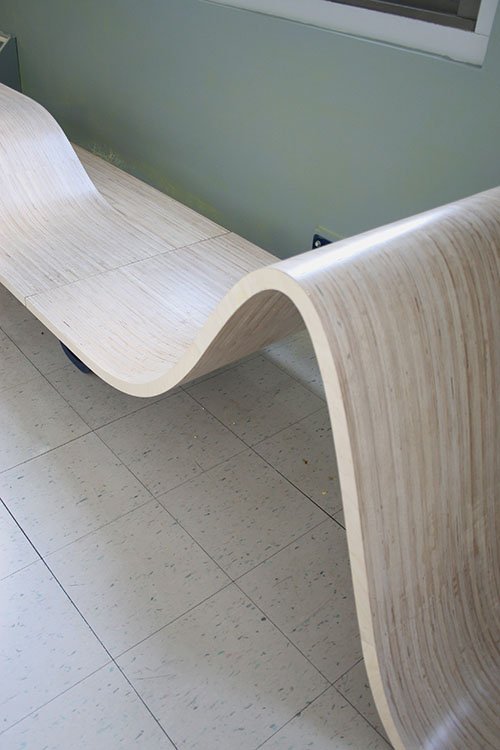
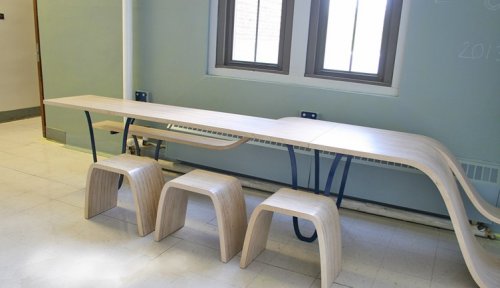
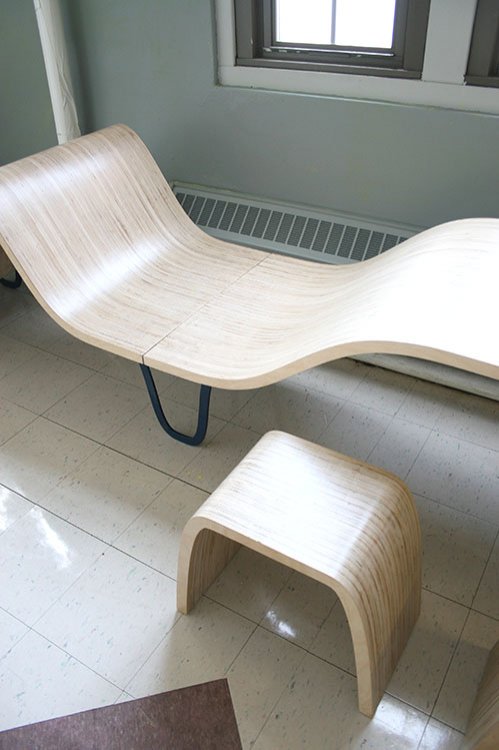
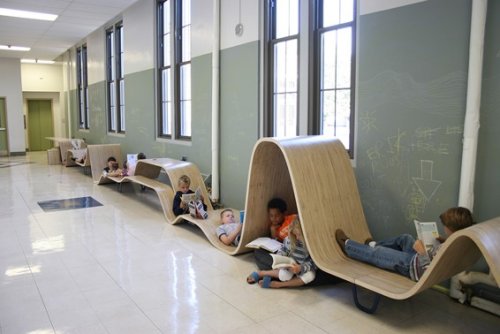
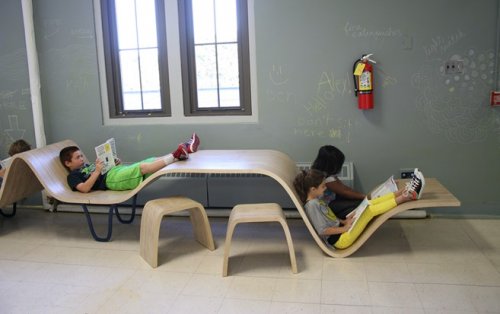
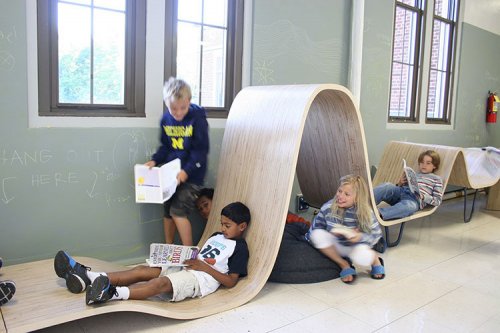
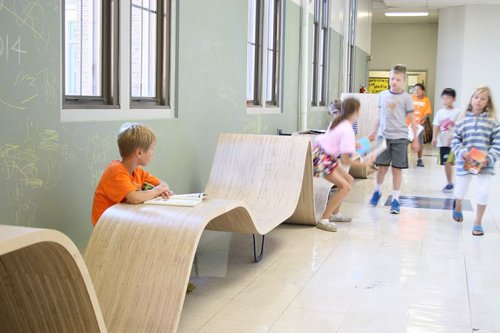
PROJECT TEAM
DESIGN: Glenn Wilcox and Anca Trandafirescu
MODEL FABRICATION: Jake Newsum and Secil Taskoparan
FABRICATION: Glenn Wilcox, Troy Hillman, Megha Chandrasekhar and Anca Trandafirescu
PHOTOS: Glenn Wilcox and Troy Hillman
FLYING CARPET | Fabrication
Monday, September 16th, 2013The Flying Carpet is a piece of microarchitecture that converts a long, narrow volume of space in Angell Elementary School into a reading, writing, lounging, and play space for the children occupants of the building. Located on the second floor among the 3rd, 4th, and 5th grade classrooms, the Flying Carpet was designed to retain the existing programmatic uses of the space but give them beautiful and lively accommodation. Folk stories in many cultures tell of a mythical flying carpet that transport their riders to distant places faster than the wind. Recalling these stories from our own childhood, the flying carpet became the apt poetic metaphor for the space’s primary activities: reading, writing, and imagining… the fastest ways we know to travel elsewhere.
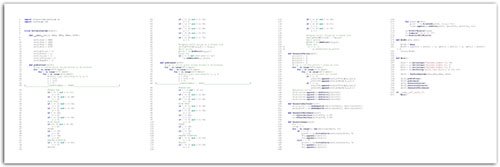
The computer script we wrote to generate the final form for the piece had to be able to produce widely varying sectional shapes, but also had to conform precisely to children’s body dimensions. Once written, we then could input conditional statements to control the table, bench, lounge, and variable “bump” heights.
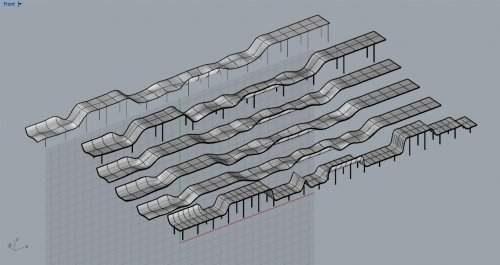
Our early variations explored the use of double curved surfaces and alternative leg supports.
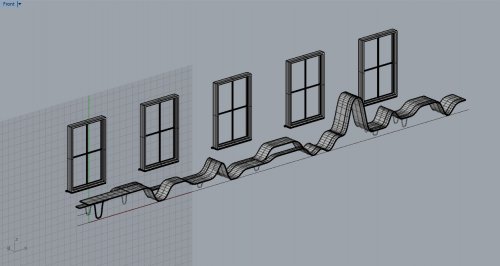
The final design responds to particular site conditions and utilizes the curvature and “landing” of the surface for self-support in addition to steel legs which follow the same geometry of the surface.
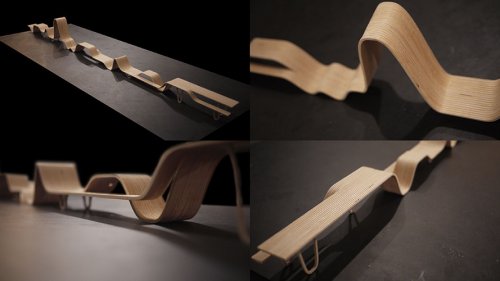
Since we were also going to be the fabricators on the project we made a series of scale models to study and refine the geometry in greater detail, and also to understand the process of fabrication and assembly of the final full scale piece.
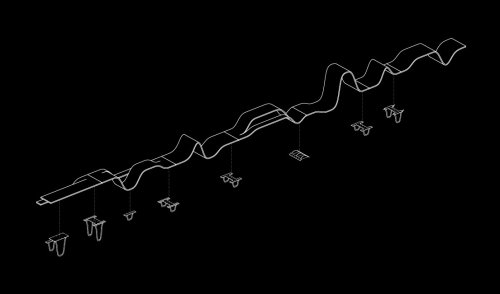
For ease of fabrication, transport, and assembly, the final design is divided into seven sections. The steel support legs also serve a secondary role of joining the sections to each other.
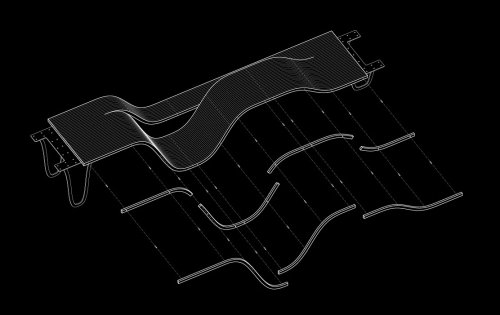
Each section is broken down into smaller elements which overlap to create a stronger bonding surface. Dowel holes are drilled in each part to facilitate alignment and rapid assembly.
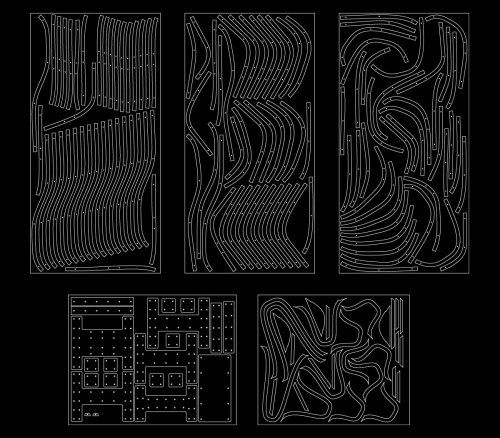
We developed cut sheets for CNC and Water-Jet cutting of both the wood and steel elements. It’s important to note that these were output directly from a 3D model to cutting files – no construction documents were made for the project.
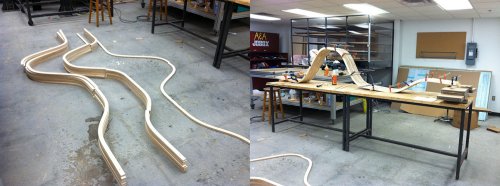
After CNC machining, elements are laid out in order prior to assembly. Sections are glued and clamped in stages.
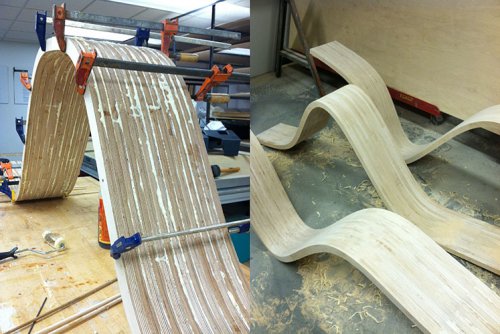
Parts are cleaned and sanded prior to section assembly.
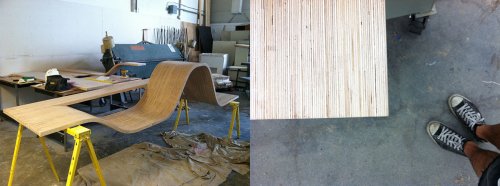
Final sanding and finishing of one of the sections.
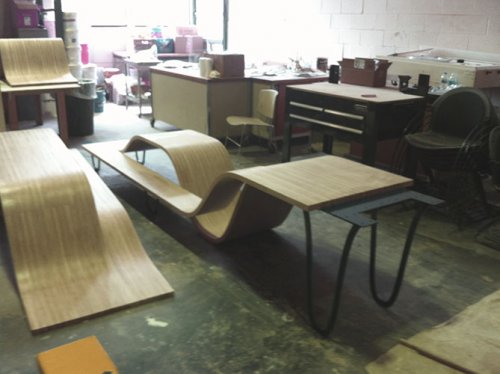
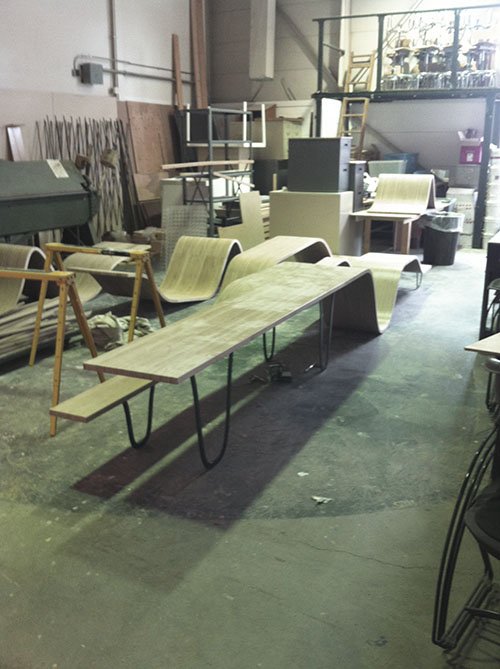
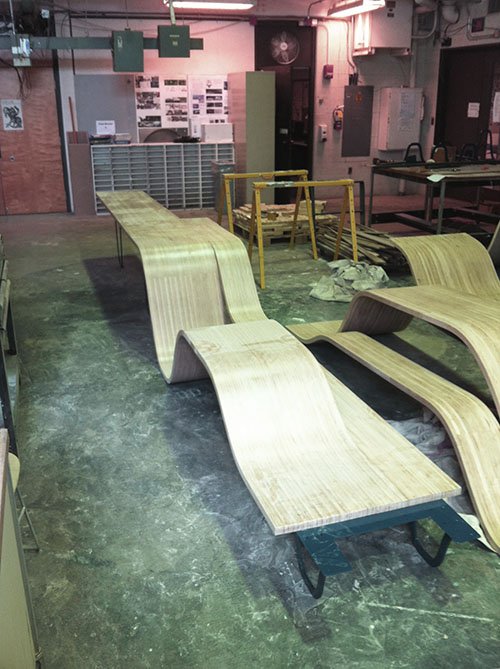
PROJECT TEAM
DESIGN: Glenn Wilcox and Anca Trandafirescu
MODEL FABRICATION: Jake Newsum and Secil Taskoparan
FABRICATION: Glenn Wilcox, Troy Hillman, Megha Chandrasekhar and Anca Trandafirescu
PHOTOS: Glenn Wilcox and Troy Hillman
CARBON FIBER LIGHTS
Monday, September 16th, 2013LUMATNOTUS | test inflation
Friday, November 9th, 2012On Wednesday and Thursday this week we test inflated the DOUBLE TORUS and TOWER in the courtyard of TCAUP. Below are some images of the results. We still have some tweaking to do on inflation pressures and need to finish the anchoring – but in general it was a success! Thanks to the crew for all your hard work over this past month. Principals: Glenn Wilcox and Anca Trandafirescu; Assembly Crew: Secil Taskoparan, Joshua Kehl, Erika Lindsay, Jeremy Luebker, Rebecca Braun, Le Nguyen, Jake Newsum.
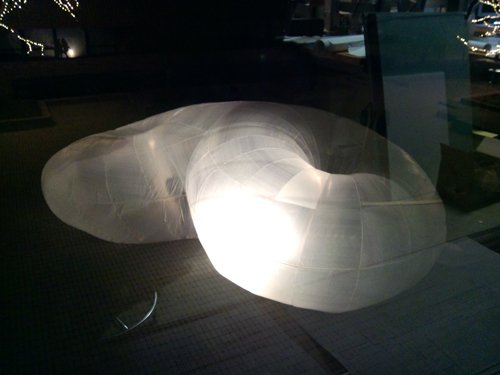
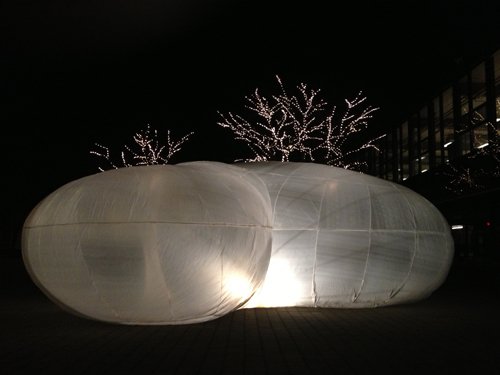
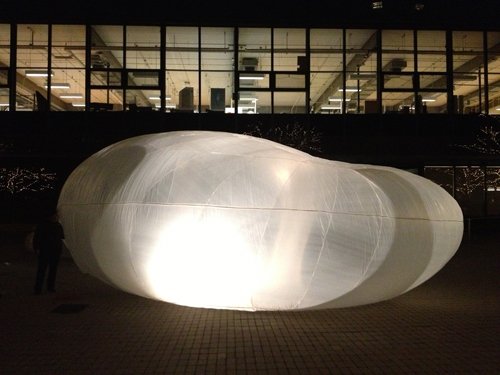
(Photos: Jeremy Luebker)
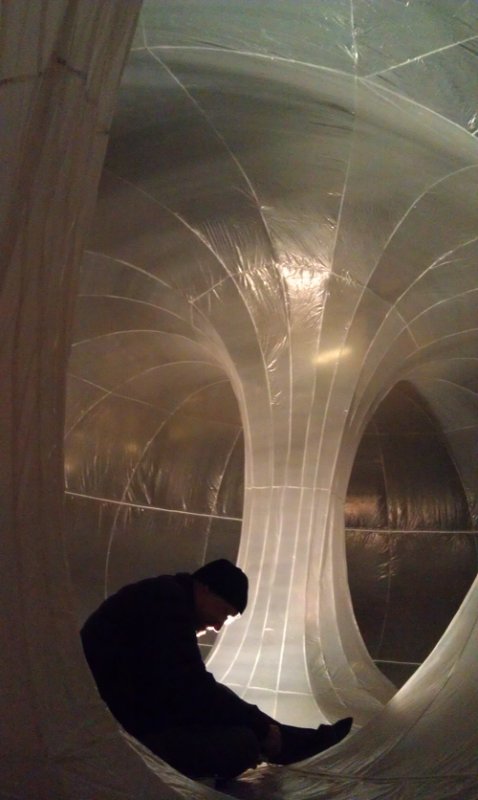
(Photo: Joshua Kehl)
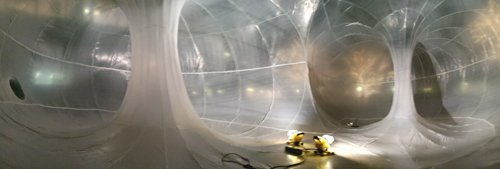
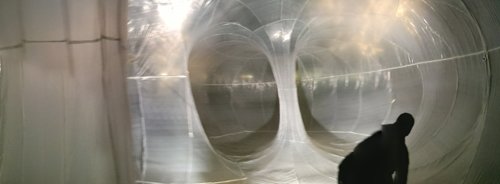
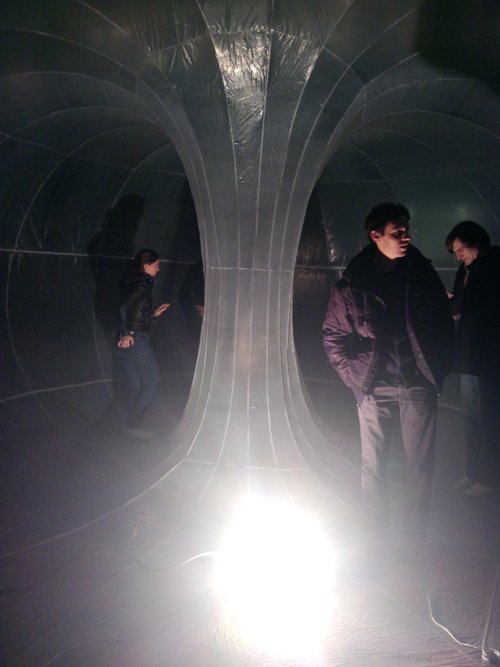
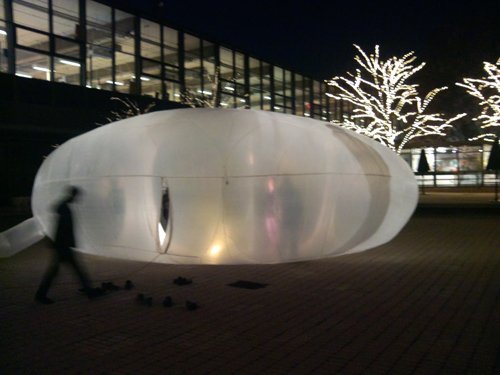
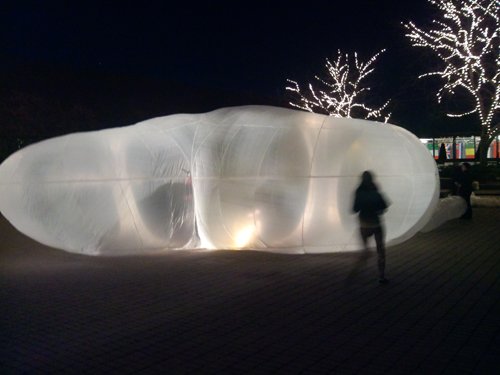
(Photos: Jeremy Luebker)
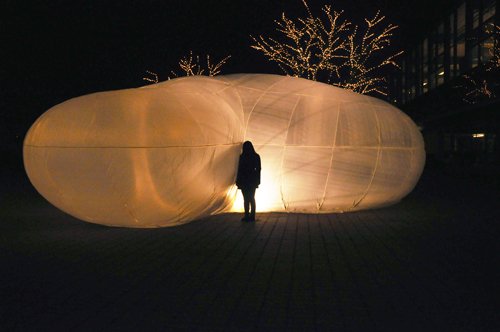
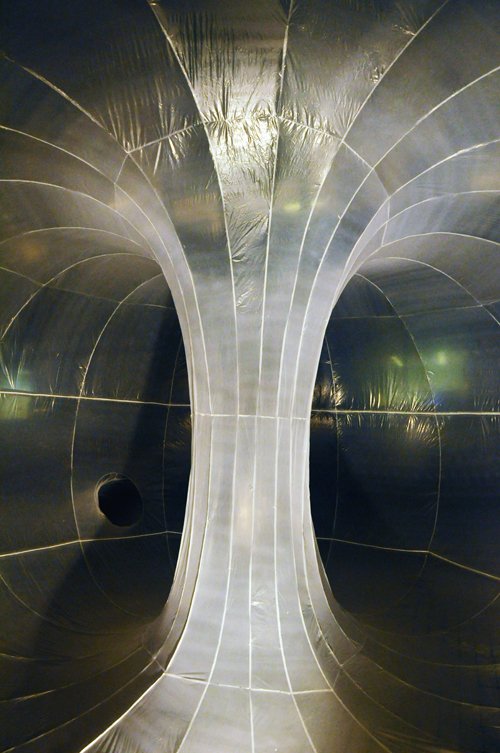
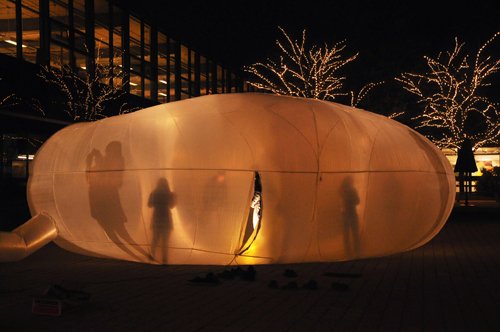
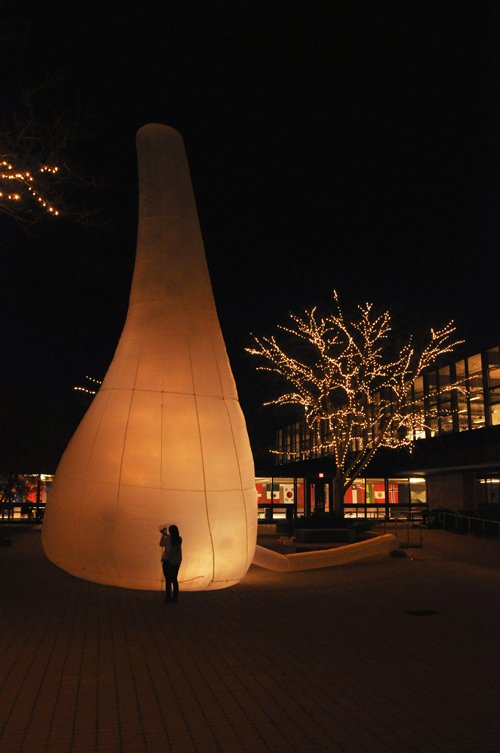
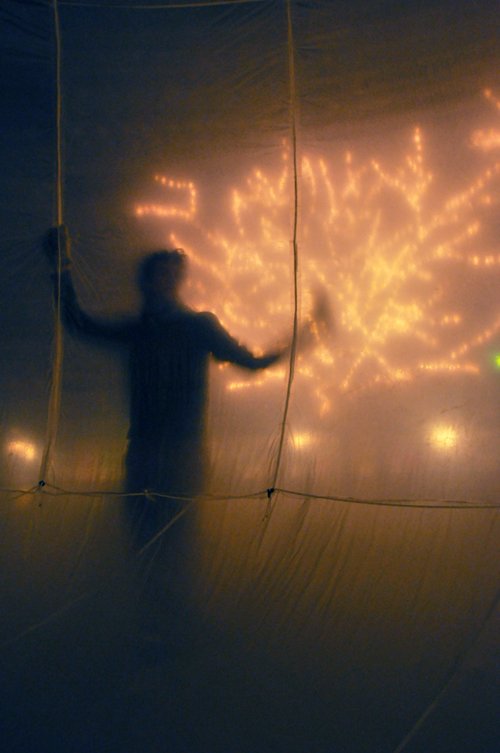
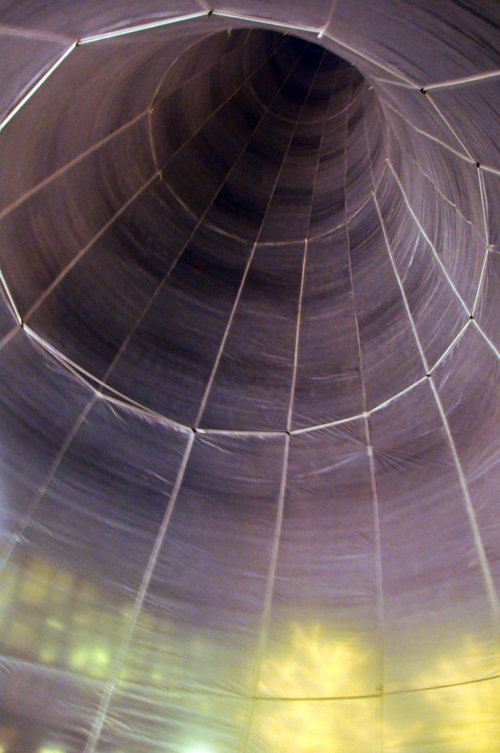
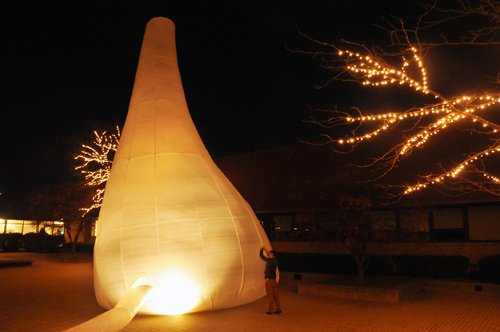
(Photos: Secil Taskoparan)
CUTWORK | Concrete Casting Project
Sunday, October 28th, 2012We continue to develop the script and form for the concrete casting project ‘Cutwork.’ And now have an actual site and program – a garden pavilion on a rural site in south-eastern Michigan. There are now many more variables involved – the depth and thickness of the parts change from bottom to top, also the vertical dimension of each row diminishes exponentially, along with the width of each vertical row from the entry to the back of the pavilion – so it subtly ‘opens up’ as one enters. Our plan over the next several months is to build a full scale vertical row to do some structural testing – and feed that data back into the computer model refining the final form – then produce all the parts over the winter for installation in the spring of 2013. A few working images below. Stay tuned.
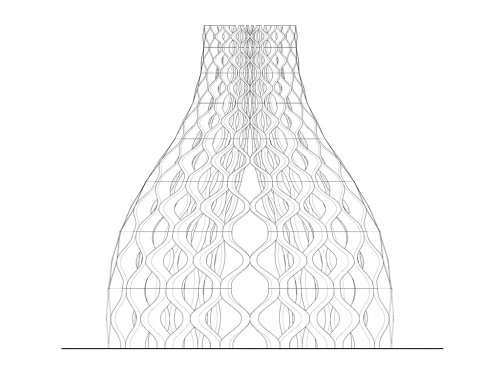
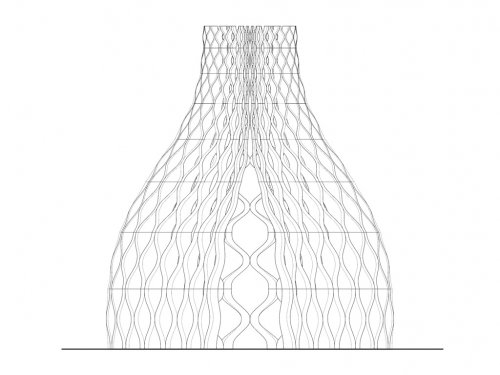

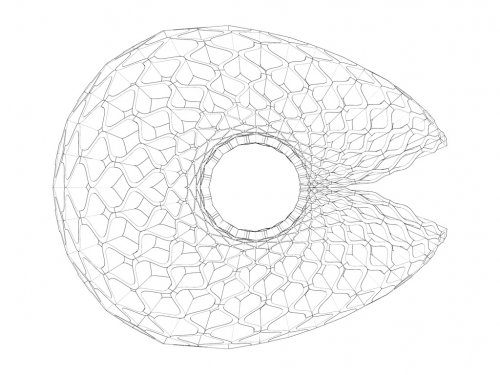
LUMANOTUS | Workshop
Friday, September 28th, 2012In mid-September we traveled to Winston-Salem, NC to conduct a workshop with the Director of Lighting Design Prof. Norman Coates’s lighting design class at the University of North Carolina School of the Arts in constructing inflatable structures. We are collaborating with this group on the project LUMANOTUS – this years Winston-Salem Lightning Project. The project will be comprised of large scale, inhabitable, inflatable structures installed for 6 days in a public park in downtown Winston-Salem. The students, under Prof Coates’s direction, will design lighting and image projection schemes that will animate the structures through choreographed performances. The event will be open and free to the public – however we are accepting donations for the project through this site. There will also be a public lecture on our work and exhibition of the design material for the project during the mounting of the pieces in mid-November. Below are a few images of a small test inflatable that we built while in NC – shown both in the lighting studio and the site.
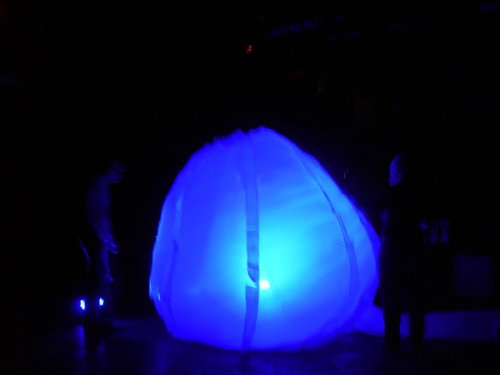
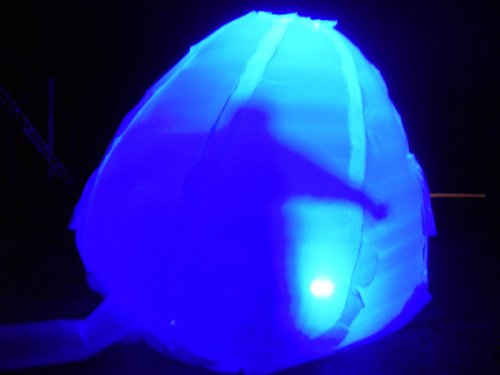
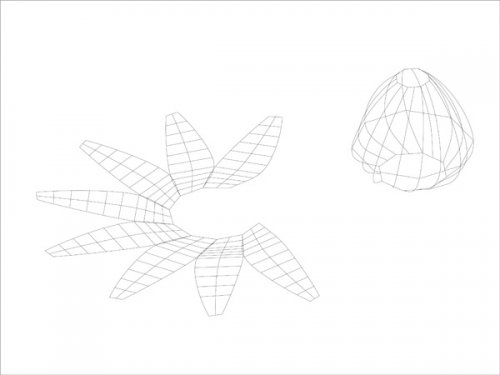
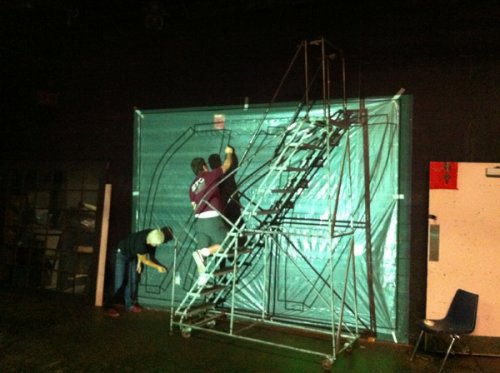
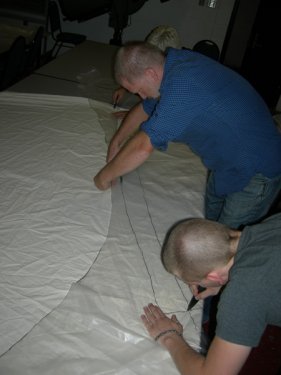
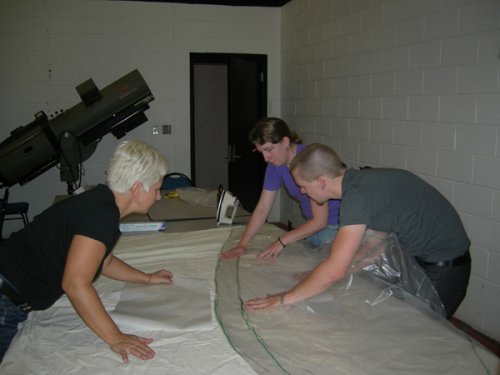
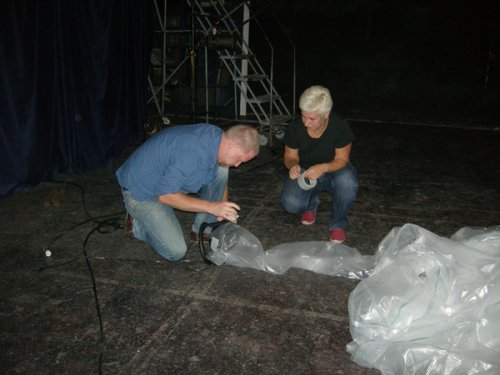
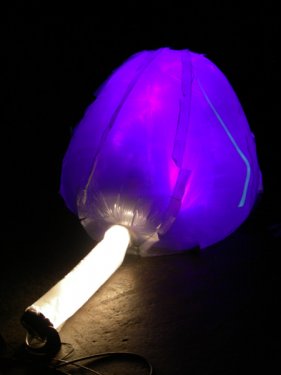
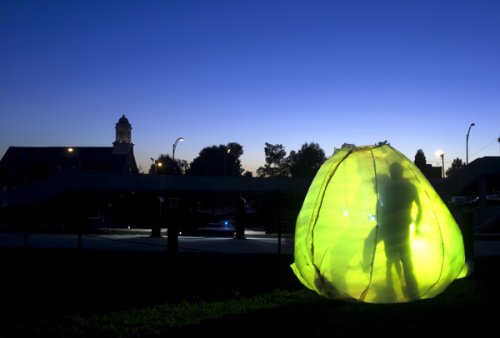
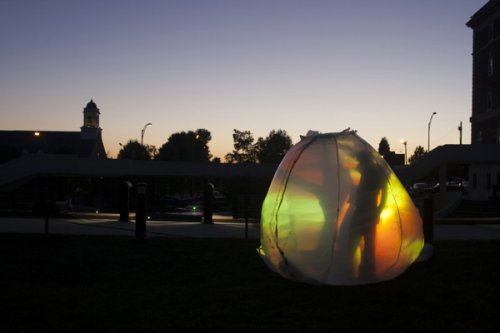
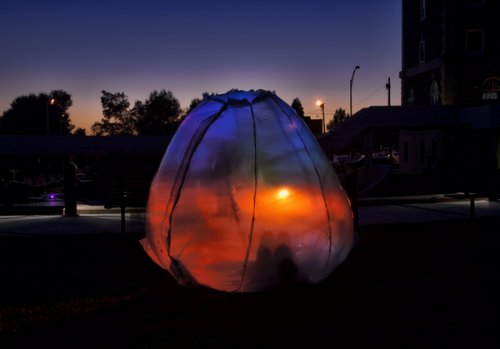
Cutwork | Concrete Ribbons Project
Friday, September 28th, 2012A current research project that we plan to build as full scale pavilion in the spring/summer of 2013. Glenn will be presenting this project in October @ the ACADIA conference in San Fransisco. Here is the complete description:
This project is part of ongoing research that investigates the utilization of a 7-axis robot for hotwire cutting casting molds from EPS foam stock for the purposes of casting variable concrete units. The projects conceptual basis is the rethinking of the masonry block as a variable unit. Rhinoceros with Python computer scripting is explored as a methodology for producing the variable units – which are aggregated to form continuous structural surface forms. Surfaces from the design models are imported to Master Cam to produce tool-pathing and G-code to run a robot controlled hotwire. Multiple molds are cut from 4’ x 8’ sheets of fully recyclable EPS foam – with average cutting time of each part being under 3 minutes. Through exploring the full span of the design and production process from coding to casting to assembly the project aims are to investigate both the efficiency of the system and its formal/structure/ornamental potentials. The aesthetic desire being to produce a form and unit design which is intricate – more like lace – possessing the texture and tactility of concrete – but having a lightness of form and linament which is perceptually other.
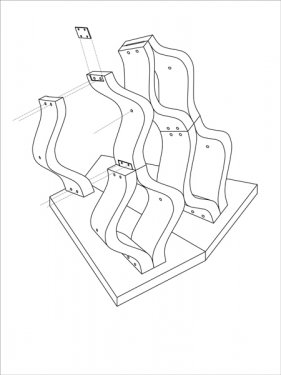
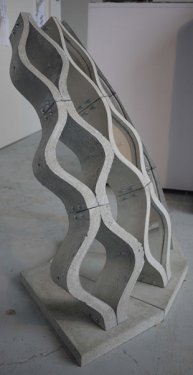
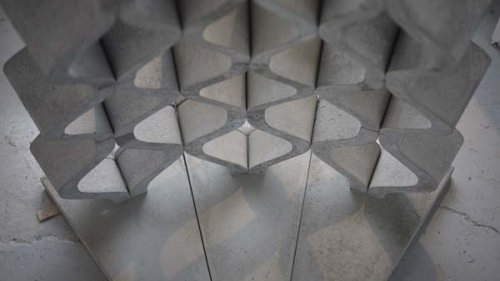
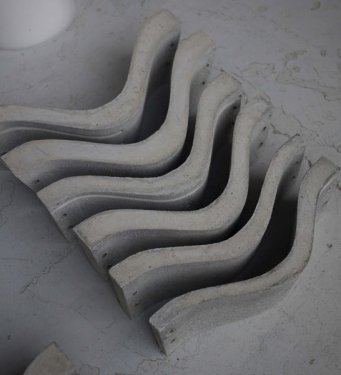
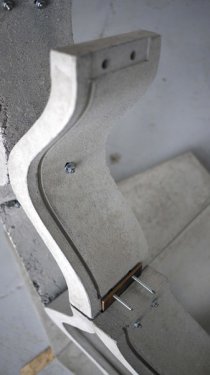
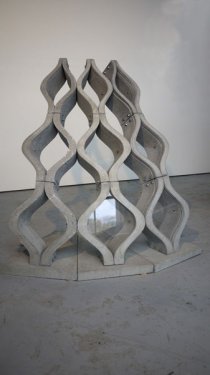
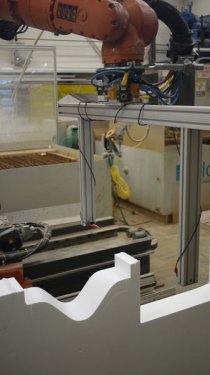
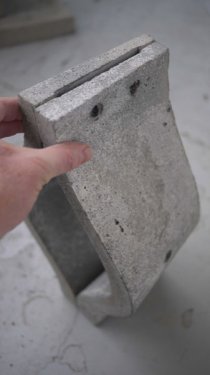
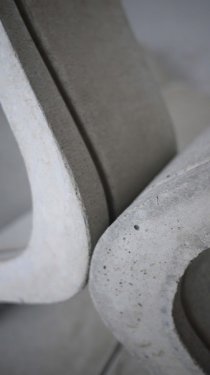
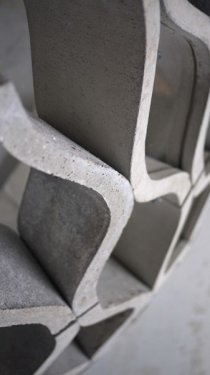
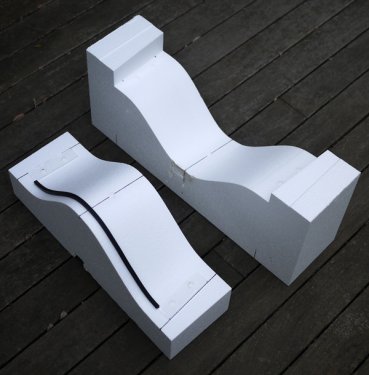
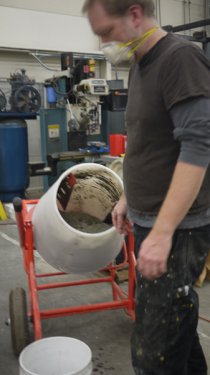
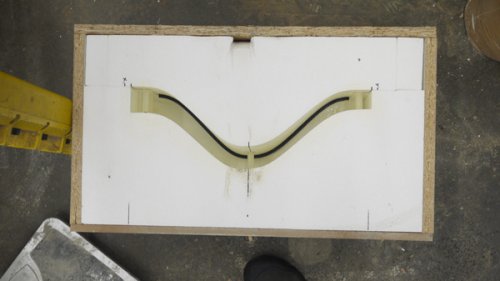
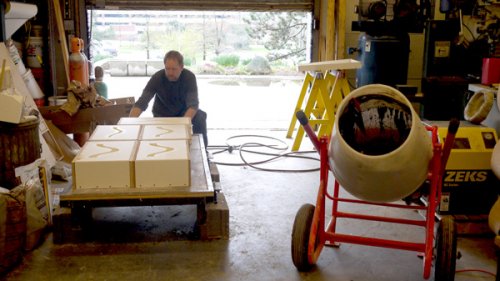
Falling Sky Brewery
Wednesday, April 18th, 2012Images of the finished Falling Sky Brewery project just before it opened. The finished tables used fir that was reclaimed from an old garage on site. The frames were powder coated grey. Let it Pour!
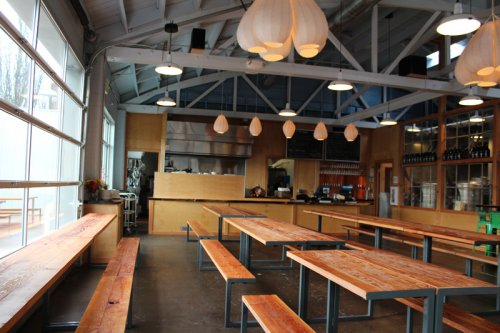
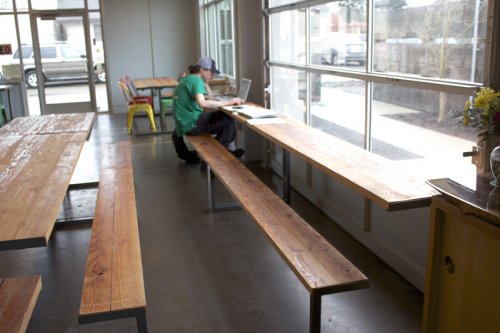
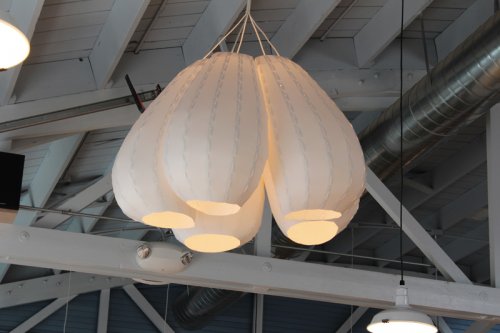
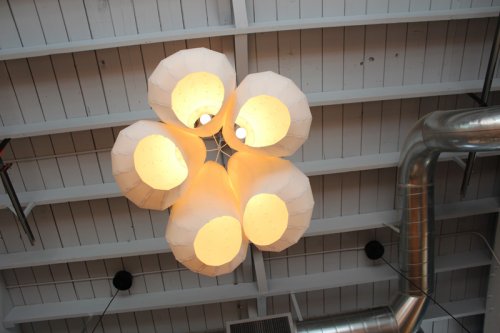
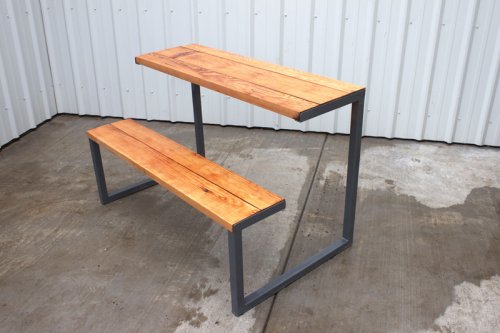
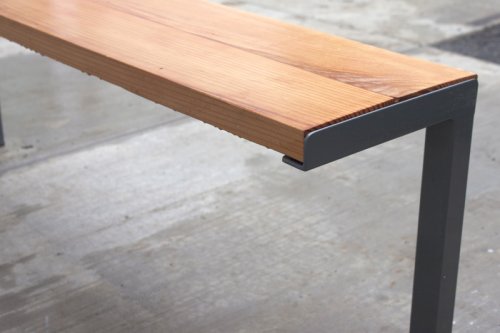
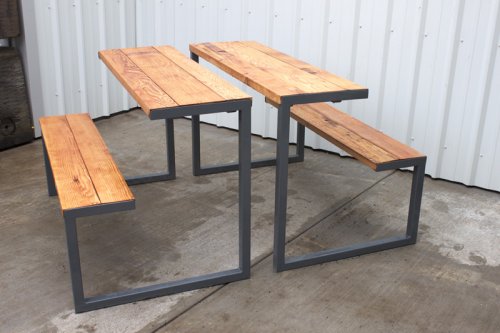
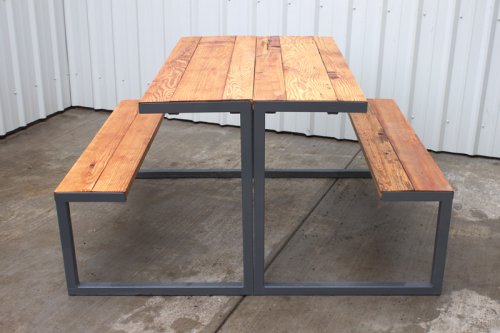
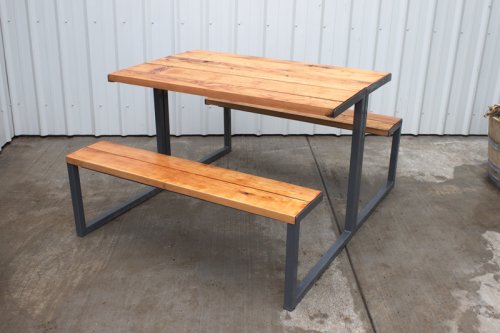
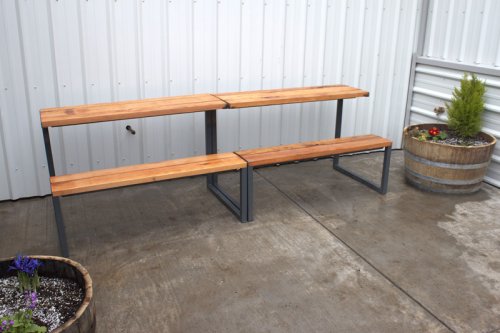
Falling Sky – Table Design
Wednesday, April 18th, 2012The table design for Falling Sky Brewery was inspired by the classic German beer hall table which is picnic table like and communal. This fit with the vision of the brewery. However – we wanted the design to be modern, minimal, flexible, and economical to build. Our idea was to use a standard steel angle and structural tubing for the framing – the wood was to be reclaimed fir salvaged from an old garage on site. We designed the tables in two halves that could work independently or together – and a series of modular sizes – 4′, 6′, and 8′ that would allow for the greatest flexibility in configuring the space.
